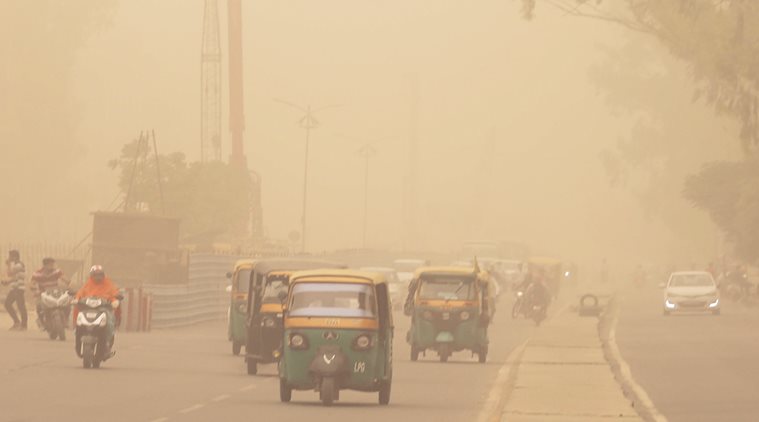What's Wrong With The Air Quality In Ludhiana?
As we know, Ludhiana is one of the most polluted cities in the world (It's ranked as the 12th most polluted city in the world as I write this but this figure changes almost every week). However, certain circumstances have made the air quality here much worse than it already was. Currently, Ludhiana is experiencing its worst air quality in the last 10 years as cyclonic circulation over northwest Madhya Pradesh coupled with a trough extending from northwest Rajasthan to Bihar has thrown up dust from the Thar desert into the atmosphere.
You know that the air quality is absolutely horrendous when Google sends you a notification on your phone to inform you that the AQI (Air Quality Index) is extremely high and advises you not to go outside for the sake of your lungs.
You know that the air quality is absolutely horrendous when Google sends you a notification on your phone to inform you that the AQI (Air Quality Index) is extremely high and advises you not to go outside for the sake of your lungs.
What is an AQI?
An air quality index (AQI) is a number used by weather forecasting agencies to communicate to the public how polluted the air currently is or how polluted it is forecast to become. As the AQI increases, an increasingly large percentage of the population is likely to experience increasingly severe adverse health effects, especially those who suffer from respiratory diseases or disorders.
The National Air Quality Index (AQI) in India was launched in New Delhi on 17 September,2014 under the Swachh Bharat Abhiyan. There are six AQI categories, namely Good, Satisfactory, Moderately polluted, Poor, Very Poor, and Severe. The proposed AQI considers eight pollutants (PM10, PM2.5, NO2, SO2, CO, O3, NH3, and Pb).
 |
| The various categories of AQI. |
This image gives us an idea of how the air quality can be measured using the AQI. Now, I want you to guess the highest AQI Ludhiana had in the last week (11th June, 2018 to 18th June, 2018).
Many would have guessed an AQI of around 350 - 450, right? Well, the highest AQI was 488.
Wow, that is bad, extremely bad.
 |
| A picture of a highway on Friday. |
The Dominant Pollutant - PM 10.
Particle pollution, also called particulate matter or PM, is a mixture of solids and liquid droplets floating in the air. Some particles are released directly from a specific source, while others form in complicated chemical reactions in the atmosphere.
Particles come in a wide range of sizes. Particles less than or equal to 10 micro meters in diameter are so small that they can get into the lungs, potentially causing serious health problems.
Coarse dust particles (PM 10) are 2.5mm to 10mm in diameter. Sources include crushing or grinding operations, dust stirred up by vehicles on roads and the dust / sand particles transported by the air.
When breathed in, PM 10 penetrates deep into the lungs. Exposure to high concentrations of it can result in a number of health impacts ranging from coughing and wheezing to asthma attacks and bronchitis to high blood pressure, heart attack, strokes and premature death.
The Condensed Idea
With reference to this information, it can be concluded that inhaling all these particles in the air can really mess with your lungs. You are basically left with no option but to stay indoors to prevent any harm, unless you are a masochist. I'm glad that it rained on the 15th and the 16th, but the air quality in Ludhiana remains extremely poor in spite of this temporary relief. We can just hope that everything goes back to normal sooner or later.
Thank you for reading and have a great day ahead!
-Ritin Malhotra
Comments
Post a Comment